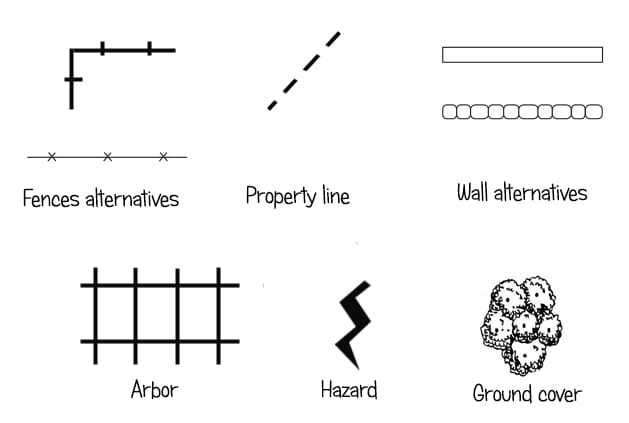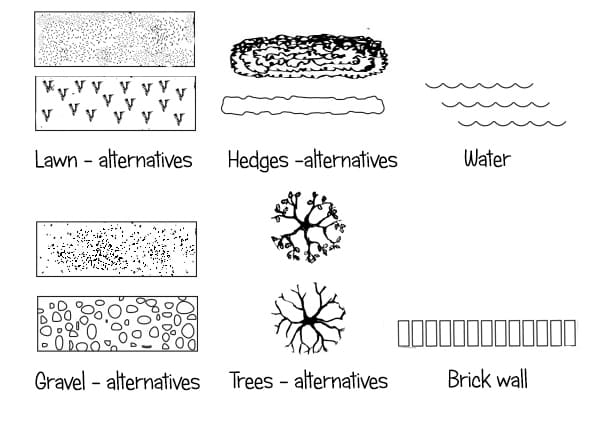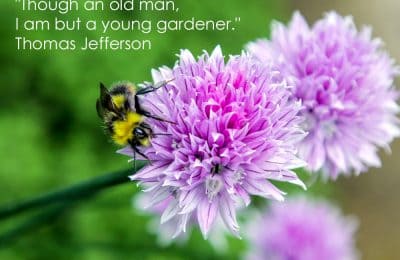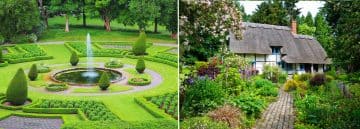Garden designers use graphic symbols to show elements such as plants and hard landscaping on a garden plan. Different symbols are used to indicate types of plants, such as shrubs, evergreen trees, deciduous trees, and groundcover. Hardscape materials, such as walls, surfaces and fences can also be shown using symbols. There is no single accepted collection of symbols; designers each use their own preferred symbols to represent a particular plant or feature. It is, however, important to be consistent in your use of symbols. Below are some examples of graphic symbols for plants and surfaces.

Sample Exam Questions
Question:
State FOUR advantages of using standard graphic symbols on a scale plan.
Sample Answer:
Advantages of using standard graphic symbols include:
- Symbols are universally recognised so plans can easily be interpreted by other designers, gardeners, contractors and clients.
- If symbols are used this reduces the need for a key.
- Symbols are simple to draw and easy to replicate, compared to a full drawing of a plant or other feature.
- Labels and arrows are not required as symbols show position and type of feature without labelling.
Question:
Plans are to be presented to a client for approval. Complete the table below by drawing a suitable graphic symbol for EACH of the named features.
Lawn, Hedge, Water, Gravel, Deciduous Tree, Brick Wall.
The examiners noted that good answers showed clarity between the features asked for, that is, each symbol represented the relevant feature well. They also noted ‘Marks were lost if the symbols too closely resembled each other i.e. lawn and gravel were interchangeable.
Sample Answer:
Note we have shown alternatives in some cases, but in the exam you should only give one symbol for each feature.



See also this lovely short video on how to draw plant symbols:


